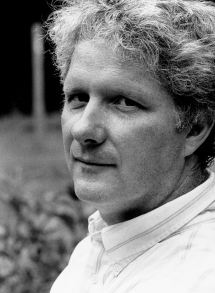
To satisfy an audience a story must ring true. One way to create a story that rings true is for the storyteller to understand how to create characters and situations that embody what I call dramatic truths.
Dorothy in The Wizard of Oz wants to find her way home, the Tin Man a heart, the Scarecrow, a brain, the Cowardly Lion, courage.
Rocky wants to be somebody.
The Velveteen Rabbit wants to be real.
Harry Potter wants to fit in.
Each character embodies a truth that defines them. These truths are dramatic because they are in need of resolution. Will Dorothy find her way home, Rocky become somebody, Harry fit in, the Velveteen rabbit become real?
Every story, every significant character in a story, even the environment of a story, can represent a dramatic truth.
Conversely, a character, plot event or scene description that doesn’t represent a dramatic truth can risk appearing to be literal and inconsequential.
That Dorothy is twelve and has black hair are literal truths. Literal truths describe, dramatic truths evoke who a character is and what he or she wants.
The point of getting across a character’s dramatic truth with their introduction isn’t to suggest that one has to ‘spill the beans’ in the first scene of a screenplay. But, to understand the dramatic truth of a story, of a character in a story, or even the truth of the environment of a story (Kansas as well as Oz ring true) is to have a compass to what words to use to create visual images that convey purpose and meaning. This is vital in screen writing because of the necessity of an economy of words.
Many writers, to avoid being overly descriptive, go toward offering flat, literal description that speaks no dramatic truth. A woman is blond, 29, athletic. A man is 32, stocky, handsome.
I very often read scripts where characters have a role in a story’s plot, have a presence in scenes, but the characters and plot events represent no dramatic truth. Such stories can offer resolution, but it’s like a bowl containing the ingredients of a cake instead of a finished cake. Such stories and characters are not fulfilling. I most often see this kind of presentation of literal truths about characters in the beginning of a story. It makes the beginning of a script the weakest part of the story.
I’ve found that many writers have been taught to never be obvious, but this leads many screenwriters to become obscure. To help writers create a dramatic truth, I ask that writers start with an obvious statement about who a character is. I then ask that the writer create an obscure sentence that suggests nothing about what’s ‘true’ for a character, then a sentence that is dramatically suggestive about a character’s truth.
Understanding the truth of a character can help guide a writer to making choices that are dramatic and suggestive.
Start a story with something that speaks clearly and directly to me as a reader, even if it’s just a few words about a character or a story’s environment. Make me want to know more. Make me want to share that character’s journey in a story.
Then you’ll have larger-than-life characters who come off the page and embed themselves into the imagination of your script reader.
* * * * *
Bill Johnson is author of A Story is a Promise & The Spirit of Storytelling, available on Amazon as a trade paperback and for the Kindle. He’s worked with screen writer Billy Snowden (Primary Motive) and actor/screen writer Neal McDonough. He reviews popular stories and movies on his website. [subscribe2]

Here's a dramatic truth: Chris want's to be a decent writer. Does he pick up some tips from this excellent post?
A nice twist on character development. I like to offer an initial introduction, and then let the character show us by dialogue and actions who they are and who they are becoming. But then, I write novels, not screenplays, so I have more space in which my characters can reveal themselves.
Sometimes even a literal descriptions can reveal a dramatic truth, such as in a gesture, facial expression, etc. Or a trait like 'he tended to fade into the background so that people forgot he was in the room'.
Interesting. It will make me look at my own characters more closely.